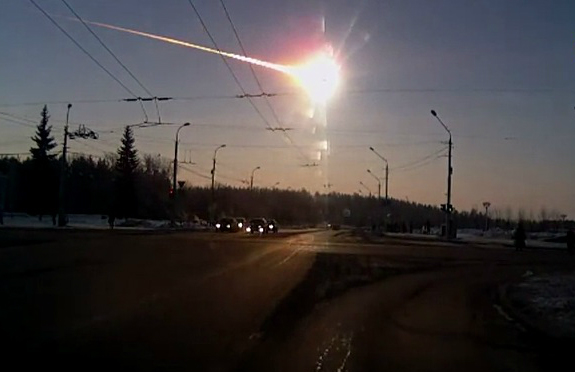CORNWALL, Ontario – A massive blast wave felt by residents living near the provincial border east of Cornwall indicates we were likely treated to a meteor event, said an expert.
Andrew Fazekas, an astronomy columnist for National Geographic, told Seaway News that scientists and other experts are hoping to find some photographic evidence, perhaps via security cameras and the like, that proves a meteor swept into our region Tuesday evening.
People living from the west end of Montreal to Cornwall heard what some have described as a loud boom at around 8 p.m. Tuesday.
“Right now we’re really just looking for footage,” said Fazekas, adding if he “guessed” at it, he would suggest the meteor could have been as big as a car. “There’s hundreds, if not thousands of reports coming in right now.”
Fazekas said a flash of blue light, followed by a loud booming noise, is the “hallmark” of a meteor event and that is exactly what some people are saying happened Tuesday night.
Carol Manson, of Finch, was walking her dogs just before 8 p.m. Tuesday night and said the blue flash was brilliant.
“(It) lit up the ground underneath me for a fraction of second and when I looked up to the sky there was nothing there,” she said. “ I thought maybe it was headlights from a passing car but it lit up such a big area it didn’t seem possible.
“I didn’t hear anything but I was so shocked by the light that I guess that’s what I was focused on.“
Colleen Parette was returning to her home in Martintown when she saw a similar event.
“It was like a flash bulb just went off,” she said.
The bad news is it may be difficult to prove exactly what happened.
A massive snowstorm that tore through the area Tuesday night made seeing anything in the sky difficult. And with residents and snowplows now hard at work clearing the snow, evidence on the ground could be hard to come by.
“It could remain a mystery forever,” said Fazekas, who is also a director at the Montreal branch of the Royal Astronomical Society of Canada. “That’s why we really need some (photographic) proof.”
Meteors can be travelling at a mind-boggling 60,000 km/h when they enter the atmosphere, which can lead to dazzling light shows and even damage if the object is big enough and explodes near or the ground – or actually impacts with the Earth.
Fazekas said most meteors that are seen as shooting stars are often no bigger than a grain of sand.
Although a meteorite strike can often be detected by seismographs, Earthquake Canada has not registered any such event. The United States Geological Survey also said it had no recent reports of any quakes in the region.



